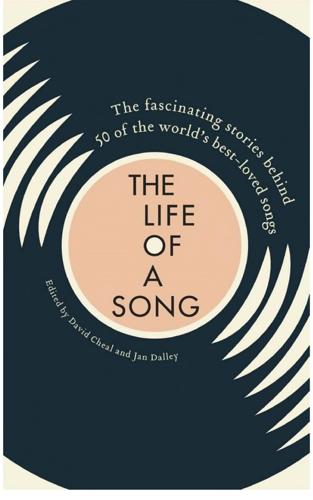
The Life of a Song: The Fascinating Stories Behind 50 of the World’s Best-Loved Songs
by
David Cheal
and
Jan Dalley
Published 20 Sep 2017
In 1971 The Beach Boys finally released ‘Surf’s Up’ on an album of the same name. Fleshed out with a band, brass and harmonies, the song was beguiling and enigmatic: another ‘pocket symphony’ to follow 1966’s revolutionary ‘Good Vibrations’. Wilson, of course, never actually surfed. Parks’ lyric was catching a different kind of wave, the emerging 1960s counterculture, the rise of the baby boomers, and the phrase ‘surf’s up’ arrives at a point in the song where it is marking a transition from old to new, from age to youth: ‘Surf’s Up/Aboard a tidal wave/Come about hard and join/The young and often spring you gave’. Later, the lyric echoes William Wordsworth: ‘The child is father of the man.’
…
In 2000, aged just 15, she played it on the mountain where Japan Airlines Flight 123 hit the ground after 32 minutes of worsening technical failures during which some passengers had time to scribble final words to their loved ones. Five hundred and twenty people were killed; also among the dead was the song’s original singer, Sakamoto. Helen Brown 48 ME AND BOBBY MCGEE Few artists embodied the 1960s counter-culture as fully or as fatally as Janis Joplin. A self-described Texan ‘misfit’, she outrageously lived – and died – the rock ’n’ roll life, blasting the Monterey Pop festival with her volcanic eruption of a blues voice, dressing in tripped-out granny chic and commissioning the cult cartoonist Robert Crumb to create an album sleeve.
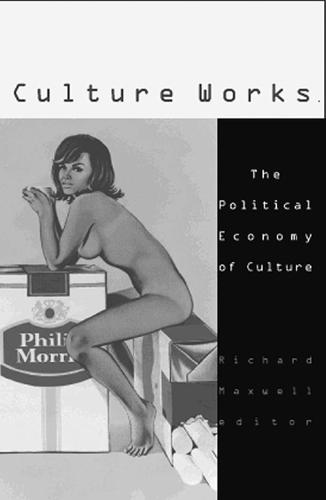
Culture works: the political economy of culture
by
Richard Maxwell
Published 15 Jan 2001
There is nothing new about the capitalist media’s willingness to devour and reinvent itself in the search for the new, about its tendency to fragment, diversify, and explore alternative cultures. Alfred Hitchcock acerbically made fun of the commercials in his own television show in the early 1960s; this was during the hegemonic pinnacle of the Cold War/Madison Avenue dominance of U.S. cultural production, and well before the late 1960s counterculture roared through the United States, to a large degree on the backs of for-profit record companies and radio stations. The feature films and television programs that Hitchcock directed were renowned for their edge-like qualities long before the term became fashionable. If for no other reason than the pressure to expand profits and markets, capitalist media experience ongoing pressures to innovate and to call attention to the process of innovation.
…
There are various literatures that look at romanticism this way, but one place to start is Colin Campbell’s neo-Weberian book The Romantic Ethic and the Spirit of Modern Consumerism.32 His general argument is a compelling one: that the consumer culture 237 Michael Curtin and Thoma s Streeter is romantic in its structure, that the forms of individualism it encourages tend to be more about self-transformation and anticipatory pleasures— about what some call the desire to desire—than about the satisfaction of utilitarian needs. And he suggests that romanticism is both a necessary condition to capitalism as we know it and a common feature of many substantial movements of resistance to capitalism, the paradigmatic case being the 1960s counterculture, when many people pursued a form of individualism that desired to free the human spirit from the utilitarian conformity of modern capitalism. In this view, then, the author construct, like the romanticism of which it is part, is related to capitalist property relations in what might be described as a tangential fashion.
…
A good example of this potential can be found in the computer software industry, currently one of the most dynamic sites of creative labor and one of the most hotly contested arenas of intellectual property law. Today’s computer culture can be understood as a deeply contradictory but politically very powerful fusion of a 1960s countercultural attitude with a revived form of political libertarianism, a fusion that has been inscribed in the designs and organization of computers themselves and that is accomplished by a powerful, if naive, form of romantic individualism. This can be illustrated in a number of ways, including the ways that the countercultural compendium called the Whole Earth Catalogue evolved from being a radical 238 Media communications outlet for groups like the Black Panthers into a computer catalog that eventually provided much of the editorial staff of Wired magazine.33 One of the distinctive strains of thought in the computer community is a vision of the computer as a device for the manipulation of symbols, as a medium for personal expression, instead of as a calculating or thinking machine.
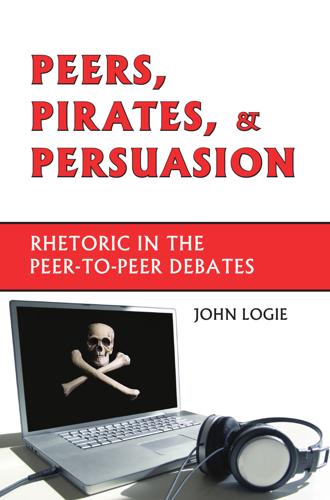
Peers, Pirates, and Persuasion: Rhetoric in the Peer-To-Peer Debates
by
John Logie
Published 29 Dec 2006
One hacker who arguably deserves Levy’s hyperbole is Richard Stallman, whose has worked for two decades as the leader and inspiration for the “Free Software” movement and the chief developer of “GNU,” a resolutely free alternative to the proprietary UNIX operating system. Like Levy, Stallman cites “playfulness, cleverness, and exploration” as the signature elements of true hacking (15). Stallman’s own account of his efforts bespeaks an idealism rooted in the 1960s counterculture, and an overarching commitment to building community via electronic spaces. Stallman traces his interest in developing GNU to the dissolution of the rich community of first and second generation hackers that surrounded him as he pursued his college education in the early 1970s. After mourning this loss, Stallman determined to take action: “I looked for a way that a programmer could do something for the good.
…
See also Seabiscuit Himanen, Pekka: The Hacker Ethic, 23–24 Hollywood, 33, 76, 106 Howard, Rebecca Moore, 20, 83, 149 Huberman, Bernardo, 99 Iglauer, Bruce, 88 intellectual property, 7–8, 14–15, 17, 28, 31, 40, 47–48, 55, 60, 71, 78, 81, 83, 108–9, 120–21, 126, 129–32, 140–43 Internet: dependence on content, 13, use in education and research 14–15, roots in 1960s counterculture 26–29; as site for innovative distribution of music 102; centrality of peerto-peer technologies, 127–29; latent potential of, 144–46 ISPs (Internet Service Providers), 91, 108, 144 inventors, 20, 38, 48, 75, 78, 132, 140 iPod, 59, 62–65, 91; initial dependence upon Napster 64 Jaszi, Peter, 20 Jefferson, Thomas, 130 Jobs, Steve, 65–66, 123 Johnson, Lyndon, 106 Jolson, Al, 101, 103 Kaempfert, Bert, 3 Kazaa, 6, 12, 13, 90–100, 119, 136; Kazaa Media Desktop, 12, 97–98 Kennedy, Anthony, 139 LeFevre, Karen Burke, 20, 130; Invention as a Social Act, 130 Lessig, Lawrence, 20, 28, 102; Free Culture, 82–83, 102; The Future of Ideas, 85 Pa r l orPr e s s 162 Levy, Steven, 24–28, 30; articulation of the “Hacker Ethic,” 27–28.
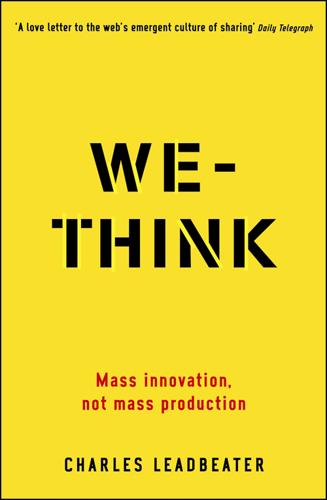
We-Think: Mass Innovation, Not Mass Production
by
Charles Leadbeater
Published 9 Dec 2010
The avant-garde imagined that spectatorship would give way to participation permitting people to become more social and collaborative, egalitarian and engaged with one another, to borrow and share ideas. Our ever-so-trendy Web 2.0 culture, embraced by politicians of left and right, by companies and educators, is the bastard offspring of this mélange of ideas from the 1960s counter-culture. Mass participation, Debord’s antidote to the society of the spectacle, has turned into YouTube and social-networking sites on which we can all make a spectacle of ourselves. The libertarian, voluntaristic communities that briefly flowered in their thousands in California and New Mexico find their modern counterparts in the open-source communities listed on SourceForge and the virtual homesteaders of Second Life, as they create their own rules and currencies.
…
Media and culture used to be an industrial business dependent on large printing presses and expensive television studios, making products for the mass audiences needed to sustain their costly operations. The spread of the web means more people than ever can have their say, post their comment, make a video, show a picture, write a song. The more I-Think there is, the more content and information we create, the more we will need We-Think to sort it. The anti-industrial ideas of the 1960s counter-culture, bringing together Doug Engelbart’s vision of distributed and decentralised technologies and Fred Moore’s ethic of sharing, underpin hopes that we might still be able to create egalitarian, self-governing communities. Finally, We-Think revives pre-industrial forms of organisation: the commons, peer-to-peer working, community innovation and folk creativity.

Artificial Unintelligence: How Computers Misunderstand the World
by
Meredith Broussard
Published 19 Apr 2018
It made me wonder why we are spending so much money to put technology into classrooms when we already have a cheap, effective solution that works well. The next chapter (chapter 6) is a whirlwind tour through the history of machines, specifically focused on Marvin Minsky—commonly known as the father of artificial intelligence—and the enormous role that 1960s counterculture played in developing the beliefs about the Internet that exist in 2017, the time this book was written. My goal here is to show you how the dreams and goals of specific individuals have shaped scientific knowledge, culture, business rhetoric, and even the legal framework of today’s technology through deliberate choices.
…
However, at tech firms the real power is held by the developers and engineers, not by the marketers or HR folks. It’s also worth considering the consequences of sudden, vast wealth on the community of programmers. Drugs play a large role in Silicon Valley and thus in the larger tech culture. Drugs were a major part of the 1960s counterculture, from LSD and marijuana to mushrooms and peyote and speed. In tech, drugs never became unpopular, but for years nobody really cared if developers were stoned so long as the code shipped on time. Now, with the opiate crisis reaching dramatic heights, it raises the question of how much technologists are facilitating the popularity and distribution of the ADD drugs and LSD and mushrooms and marijuana and nootropics and ayahuasca and DIY performance-enhancing drugs that are as popular in Silicon Valley as elsewhere.

100 Years of Identity Crisis: Culture War Over Socialisation
by
Frank Furedi
Published 6 Sep 2021
To take some random examples featured on Google: ‘The Identity Crisis of Sustainable Development’,9 ‘The Identity Crisis of Feminist Theory’,10 ‘The Identity Crisis of the Ultra Rich’,11 ‘The Online Identity Crisis’.12 Back in 1968, Erikson also drew attention to the emergence of a phenomenon that would become far more prominent in the decades to follow. He pointed to an unprecedented explosion of identity-talk by the 1960s counter-cultural movement as well as by other sections of society. ‘We are witnessing an exacerbated “identity-consciousness”’, he stated. He added: For whereas twenty years ago we gingerly suggested that some young people might be suffering from a more or less unconscious identity conflict, a certain type tells us in no uncertain terms, and with the dramatic outer display of what we once considered to be inner secrets, that yes, indeed, they have an identity conflict – and they wear it on their sleeves.13 Erikson’s claim that the inner secrets surrounding people’s internal identity conflicts were transformed into public statements anticipated the emergence of a culture where many people do wear their identity on their sleeves.
…
The cultural changes that had been set in motion decades previously unexpectedly acquired sufficient power and assertiveness to self-consciously declare itself as a counter-culture. The discovery and institutionalisation of adolescence in the 19th century was consummated in the 1960s. Outwardly the rise of the 1960s counter-culture appeared to represent the antithesis of the ambitions that usually accompany social engineering. Radical students lashed out against what they saw as the machine-like attitudes of leaders of the corporate world and displayed unreserved suspicion towards projects of social engineering. Their hostility towards science often went so far as to call into question scientific reasoning itself.

The Death of Truth: Notes on Falsehood in the Age of Trump
by
Michiko Kakutani
Published 17 Jul 2018
The Republican Party, once a bastion of Cold War warriors, and Trump, who ran on a law-and-order platform, shrug off the dangers of Russia’s meddling in American elections, and GOP members of Congress talk about secret cabals within the FBI and the Department of Justice. Like some members of the 1960s counterculture, many of these new Republicans reject rationality and science. During the first round of the culture wars, many on the new left rejected Enlightenment ideals as vestiges of old patriarchal and imperialist thinking. Today, such ideals of reason and progress are assailed on the right as part of a liberal plot to undercut traditional values or suspicious signs of egghead, eastern-corridor elitism.
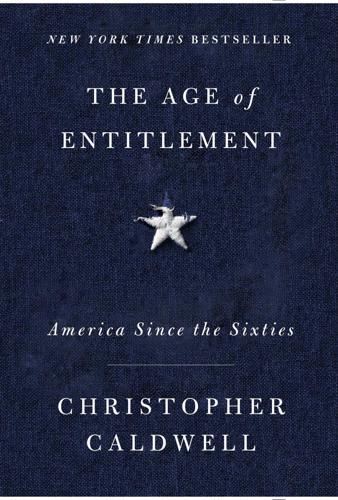
The Age of Entitlement: America Since the Sixties
by
Christopher Caldwell
Published 21 Jan 2020
What is thrilling, fulfilling, and functional about sexuality might be wrapped up in the very “complexes” about sexuality that crusaders for sexual freedom and other reformers insisted on getting rid of. The Equal Rights Amendment No ideology or belief system existing at the time of the 1960s counterculture would have allowed people to predict which facets of pre-counterculture sexual morality would flourish over the coming decades, and which die. One might have thought that prostitution would be validated (on grounds of freedom of choice and “entrepreneurship”) and pornography scorned (on grounds of inauthenticity).
…
When people came to distrust modernity as a kind of corruption, it was not just the corporate world’s supermarkets and sitcoms and dandruff shampoos they resented. It was also Washington’s dams and highways, regulations and bureaucracy. Over time it would be Johnson’s Great Society, which expanded the welfare state to undreamed-of and undesired levels. In certain lights, the 1960s counterculture looks like a reactionary movement disguised as a progressive one. Pirsig, for instance, may have been anti-war, anti-corporate, drug-friendly, and steeped in academia, but he was no “free spirit.” What he liked about small-town America was its resemblance to the country of “a hundred or two hundred years ago,” and he defended “political reactionaries” out to restore “individual worth.”
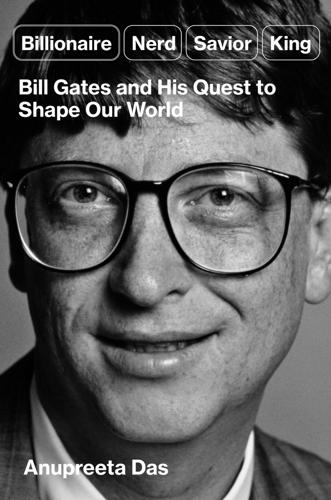
Billionaire, Nerd, Savior, King: Bill Gates and His Quest to Shape Our World
by
Anupreeta Das
Published 12 Aug 2024
But Gates and Allen were trying to build a business around the invisible stuff that makes computers work when all the excitement was around the design and development of hardware. Software was largely something that math and engineering students and hobbyists tinkered with on the side and shared freely, despite growing demand for operating systems from computer manufacturers like IBM. It was little surprise that the hobbyists, many of whom were reared in the 1960s counterculture movement that eschewed commercialism, irritated the young Gates. Their approach interfered with his business plan. In the February 1976 issue of Computer Notes magazine, Gates wrote an open letter to computer hobbyists, lamenting the software piracy and lack of principles in their community.
…
Seuss from the 1950s, while others say it is derived from the word “nut,” meaning a crazy person. But the term itself didn’t become part of the everyday lexicon until the early days of the computing revolution, when “nerd” came to stand for an eccentric male who preferred coding and hacking to human interaction, and often held antiauthoritarian beliefs popular with the 1960s counterculture movement. Ensmenger, the computer historian, has thought a lot about nerds. Genial, thoughtful, and almost boyish in his appearance, Ensmenger studied civil engineering at Princeton before becoming interested in the sociocultural aspects of computing. An associate professor at Indiana University, his research focuses on how masculine culture works within the computing industry, and how early stereotypes were formed.
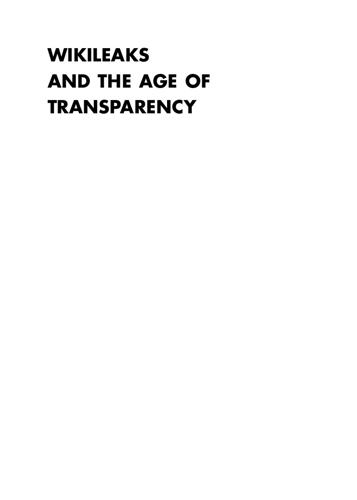
WikiLeaks and the Age of Transparency
by
Micah L. Sifry
Published 19 Feb 2011
Listening to programmer Eric Raymond give a talk on his book The Cathedral and the Bazaar, an early treatise on the value of open methods of collaborative development, I started to feel like I had stumbled upon a lost tribe from the 1960s. The Linux development community, and the larger open source software movement that it was a part of, were in fact a branch of the 1960s counterculture that had run with the idea of personal empowerment into monumental success.3 At the time, Linux was coming into its own as a reliable operating system that was free, unlike the dominant platform, Microsoft Windows. In addition, Linux was less likely to crash, less prone to viruses, and more efficient in its use of system resources.

Team Human
by
Douglas Rushkoff
Published 22 Jan 2019
That’s why being truly anomalous has to mean more than the adoption of a particular style or intersectional label. It’s about finding people with whom to connect more deeply and recognizing that the cues we use to identify one another are just means to that greater end. 65. After delivering a lecture at Berkeley, a 1960s’ counterculture psychologist took questions from the audience. A young woman stood up to explain that she understood the deep connection between people and our collective responsibility for the world, but she didn’t know what to do next. The psychologist answered, “Find the others.” Find the others. Restore the social connections that make us fully functioning humans, and oppose all conventions, institutions, technologies, and mindsets that keep us apart.

Nexus: A Brief History of Information Networks From the Stone Age to AI
by
Yuval Noah Harari
Published 9 Sep 2024
By the 1980s, this unwieldy system of computers was producing 800 billion documents per year, all destined for the capital.52 However, at a time when IBM and the Soviet government declined to develop the personal computer, hobbyists like the members of the California Homebrew Computer Club resolved to do it by themselves. It was a conscious ideological decision, influenced by the 1960s counterculture with its anarchist ideas of power to the people and libertarian distrust of governments and big corporations.53 Leading members of the Homebrew Computer Club, like Steve Jobs and Steve Wozniak, had big dreams but little money and didn’t have access to the resources of either corporate America or the government apparatus.
…
It was because of such personal decisions, rather than because of the inevitable decree of the goddess of technology, that by 1977 individuals could buy the Apple II personal computer for a price of $1,298—a considerable sum, but within reach of middle-class customers.54 We can easily imagine an alternative history. Suppose humanity in the 1970s had access to the same scientific knowledge and technical skills, but McCarthyism had killed the 1960s counterculture and established an American totalitarian regime that mirrored the Soviet system. Would we have personal computers today? Of course, personal computers might still have emerged in a different time and place. But in history, time and place are crucial, and no two moments are the same. It matters a great deal that America was colonized by the Spaniards in the 1490s rather than by the Ottomans in the 1520s, or that the atom bomb was developed by the Americans in 1945 rather than by the Germans in 1942.

Ours to Hack and to Own: The Rise of Platform Cooperativism, a New Vision for the Future of Work and a Fairer Internet
by
Trebor Scholz
and
Nathan Schneider
Published 14 Aug 2017
Today’s app-mediated landscape, despite some innovations in network topology, and a new relationship between economic and racial privilege and urban geography, offers another iteration of the same: digital platforms allow us to pick and choose the communities we connect with and commit to, replacing the messy work of political solidarity with the frictionlessness of “disruption.” The collective and cooperative workplaces emerging from the late-1960s counterculture followed the same neoliberal logic. These alternative institutions were an escape route—a way for those with the requisite privilege to construct bubbles of autonomy, outside the alienating corporate workplace and market. The most prolific and enduring cooperatives of the era were the various food cooperatives that sprung up across the country, quite literally built on the idea of aligning consumer choices with new values.

You Are Not a Gadget
by
Jaron Lanier
Published 12 Jan 2010
In fact, online culture increasingly resembles a slum in disturbing ways. Slums have more advertising than wealthy neighborhoods, for instance. People are meaner in slums; mob rule and vigilantism are commonplace. If there is a trace of “slumming” in the way that many privileged young people embrace current online culture, it is perhaps an echo of 1960s counterculture. It’s true that the record companies have not helped themselves. They have made a public fuss about suing the most sympathetic people, snooped obnoxiously, and so on. Furthermore, there’s a long history of sleaze, corruption, creative accounting, and price fixing in the music business.
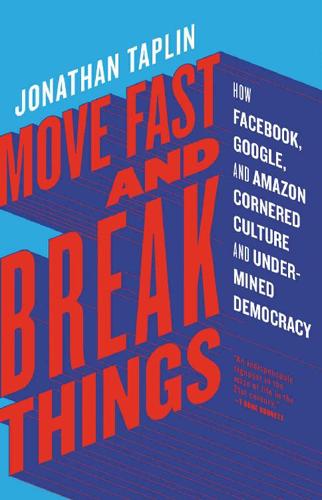
Move Fast and Break Things: How Facebook, Google, and Amazon Cornered Culture and Undermined Democracy
by
Jonathan Taplin
Published 17 Apr 2017
The beginnings of the technical and social revolution that Martin Luther King referenced in his 1968 sermon at the National Cathedral were under way even as he was speaking. The revolution began in the moral precepts of the counterculture: decentralize control and harmonize people. The earliest networks—like the Whole Earth ’Lectronic Link (WELL), organized by Stewart Brand, the founder of The Whole Earth Catalog—grew directly out of 1960s counterculture. Brand had helped novelist Ken Kesey organize the Acid Tests—epic be-ins where thousands of hippies ingested LSD and danced to the music of a new band, the Grateful Dead. Steve Jobs, founder of Apple Computer, Inc., dropped acid as well. “Jobs explained,” wrote John Markoff in his book What the Dormouse Said, “that he still believed that taking LSD was one of the two or three most important things he had done in his life, and he said he felt that because people he knew well had not tried psychedelics, there were things about him they couldn’t understand.”

Creative Selection: Inside Apple's Design Process During the Golden Age of Steve Jobs
by
Ken Kocienda
Published 3 Sep 2018
A couple weeks before I resigned from the company, I worked on one final project, an exhibition for the Design Museum in London. Apple was putting together a display about the iPhone as part of an installation called California: Designing Freedom, which would feature many West Coast American influences, from the 1960s counterculture to Silicon Valley high tech. My contribution was to revive my original keyboard autocorrection code as an example of the multitouch operating system we invented ten years earlier. I retrieved the software from our source code archives, and I got it running on a modern version of iOS so some Apple designers could refer to it as they made a high-resolution animation of the keyboard for the museum show.

Age of the City: Why Our Future Will Be Won or Lost Together
by
Ian Goldin
and
Tom Lee-Devlin
Published 21 Jun 2023
In 1996, journalist and cyber optimist John Perry Barlow published his Declaration of the Independence of Cyberspace, in which he described his vision for the internet as ‘a world that all may enter without privilege or prejudice accorded to race, economic power, military force, or station of birth … where anyone, anywhere may express his or her beliefs, no matter how singular, without fear of being coerced into silence or conformity’.1 The fact that key figures like Stewart Brand, who founded The WELL, were also central participants in the 1960s counterculture, with its egalitarian and universalist ethos, helps explain some of this utopian hyperbole. Far from societies coming closer together, the last few decades have seen many of them unravelling. In the United States, where the General Social Survey provides consistent longitudinal data, the share of adults who agree that most people can be trusted has fallen from nearly 50 per cent in the early 1970s to around 30 per cent today.2 And while back in 1960 just 5 per cent of Republicans and 4 per cent of Democrats would have been unhappy to see their child marry a person from the opposite political party, the equivalent figures in 2010 were 49 per cent and 33 per cent.3 Conspiracy theories on the right and ‘cancel culture’ on the left make constructive dialogue nearly impossible.
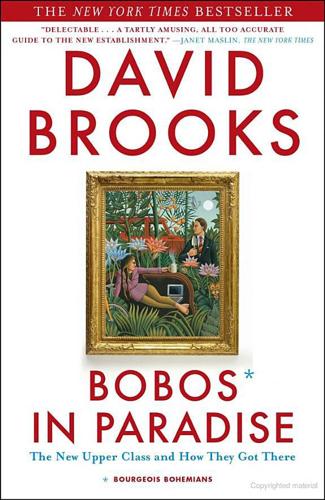
Bobos in Paradise: The New Upper Class and How They Got There
by
David Brooks
Published 1 Jan 2000
When you are amidst the educated upscalers, you can never be sure if you’re living in a world of hippies or stockbrokers. In reality you have entered the hybrid world in which everybody is a little of both. Marx told us that classes inevitably conflict, but sometimes they just blur. The values of the bourgeois mainstream culture and the values of the 1960s counterculture have merged. That culture war has ended, at least within the educated class. In its place that class has created a third culture, which is a reconciliation between the previous two. The educated elites didn’t set out to create this reconciliation. It is the product of millions of individual efforts to have things both ways.
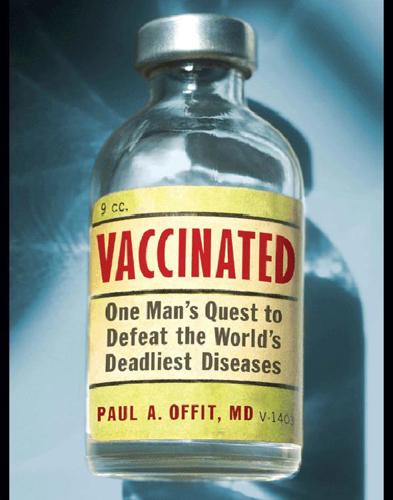
Vaccinated: One Man's Quest to Defeat the World's Deadliest Diseases
by
Paul A. Offit
Published 1 Jan 2007
But Boyer’s football coach was also his science teacher, and his coach’s passion for science influenced Boyer more than his passion for football. After high school, Boyer studied biology and chemistry at St. Vincent’s College in nearby Latrobe, Pennsylvania, followed by graduate studies at the University of Pittsburgh and postgraduate work at Yale. Then he traveled west, arriving in San Francisco at the height of the 1960s counterculture. With a broad round face, impish smile, thick walrus-like mustache, and a wardrobe of leather vests, blue jeans, and wide, open-collared shirts, Herbert Boyer looked like the rock musician Jerry Garcia from the Grateful Dead. And, like Garcia, he was active in the civil rights movement and vigorous in his protests against the war in Vietnam.

The Happiness Industry: How the Government and Big Business Sold Us Well-Being
by
William Davies
Published 11 May 2015
Elements of anti-capitalist politics, which promise an uncommodified, more honest existence, have long been a fixture of advertising copy. As far back as the 1930s, advertisements contained images of pre-industrial, communal and family life, which seemed to be imperilled by the chaos of the industrial American city.28 By the 1960s, counter-cultural imagery was featuring in commercials, even before the counter-culture had fully emerged.29 Under the influence of market research, political ideals are quietly converted into economic desire. The cold mechanics of marketing and the critique of capitalism are locked into a constant feedback loop, such that there is no remaining idea of what freedom might look like, beyond that of consumption.
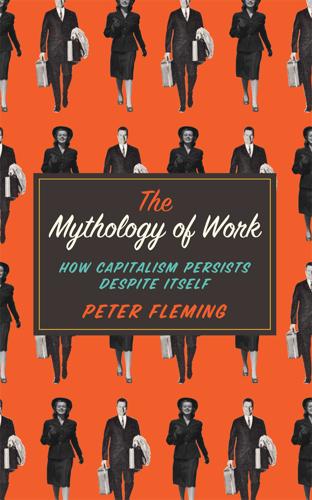
Mythology of Work: How Capitalism Persists Despite Itself
by
Peter Fleming
Published 14 Jun 2015
As the ‘immersion room’ example discussed earlier demonstrates, we can now see all sorts of attempts to make resistance speak in order to make it congruous with the ideology of work. Advertising in London currently seeks to cash in on underground chic and revolutionary cool – ‘Be your own revolution!’ cries one advert for new computer software. Right-wing management consultants tell their readers that much can be learnt from the creative upheaval of 1960s counter-culture: promote an organization that resembles the attributes of a topsy-turvy world of anarchy and hire employees that hate capitalism. But let’s look more closely at what we really mean by co-optation and recuperation. Indeed, the question of appropriation is somewhat analogous to those old (and yet still very relevant) debates about commodification.

Bike Boom: The Unexpected Resurgence of Cycling
by
Carlton Reid
Published 14 Jun 2017
—Freddie Mercury IN THE EARLY 1970s, the imagined compulsory use of a bicycle route system in the cycle-friendly California university town that spawned the hippie movement led a high-speed cyclist to codify and popularize the concept that cyclists “fare best when they act and are treated as drivers of vehicles.” The town was Palo Alto, the cyclist was John Forester, and the concept was “vehicular cycling.” Palo Alto is a suburb of San Francisco, home to Stanford University, the birthplace of the 1960s countercultural revolution that reverberated around the world after students, who were paid to take it, thought LSD should be available to all. Today the town is better known as the beating heart of Silicon Valley, famed for tech companies such as Xerox, Hewlett-Packard, and, latterly, Tesla Motors. It’s also the home city of Apple’s Steve Jobs, as well as the founders of Google, Sergey Brin and Larry Page.

After the Gig: How the Sharing Economy Got Hijacked and How to Win It Back
by
Juliet Schor
,
William Attwood-Charles
and
Mehmet Cansoy
Published 15 Mar 2020
For centuries new machines and methods of communications have arrived with outsized hopes about their ability to change the world.3 Sharing initiatives were mainly greeted with technological enthusiasm, which attracted users and propelled growth.4 This technophilia wasn’t just a passion of the moment. It can be traced back decades, to the invention of personal computers and belief in their social powers.5 Understanding this history helps explain why platforms raised such hopes and went so wrong. The Californian Ideology The 1960s counterculture that was centered in San Francisco is now mostly famous for psychedelic drugs, “flower power,” and the Grateful Dead. But in its heyday it posed a profound challenge to modern society, in the form of a critique of concentrated power and a desire for egalitarian social relations. Fred Turner, in his book From Counterculture to Cyberculture, has identified two strains of the counterculture—antiwar and free speech activists such as Berkeley’s Mario Savio, who helped form the New Left, and the “New Communalists,” who decamped to rural sites around the West to form small-scale communities.
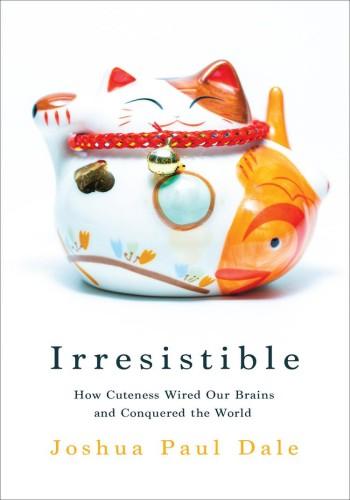
Irresistible: How Cuteness Wired our Brains and Conquered the World
by
Joshua Paul Dale
Published 15 Dec 2023
Twiggy, the famously slender teenage model with short-cropped hair and huge eyes, epitomised a youthful look that became enormously popular. Observing this cultural movement in London, Vogue editor Diana Vreeland dubbed it the ‘Youthquake’. In the US this Youthquake was fuelled by the conviction that student protests had helped to end the Vietnam War. The 1960s counter-culture morphed into the ‘Me generation’ as baby-boomers gained social and political power. In Japan, however, student protests had focused on ending the nation’s security treaty with US and, when this failed, left-wing factions became increasingly extreme. When the protests struggled to make an impact, disillusioned students turned their backs on the adult world.
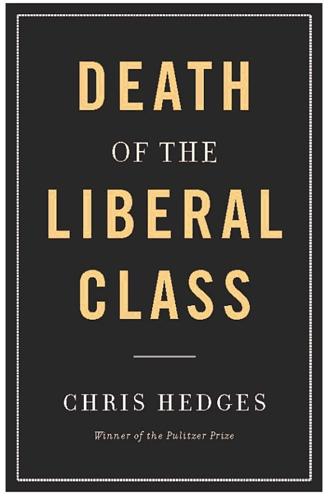
Death of the Liberal Class
by
Chris Hedges
Published 14 May 2010
The civil-rights movement, which was rooted in the moral and religious imperatives of justice and self-sacrifice, what Dwight Macdonald called nonhistorical values, was largely eclipsed by the self-centeredness of the New Left, especially after the assassinations of Malcolm X in 1967 and Martin Luther King Jr. a year later. And once the Vietnam War ended, once middle-class men no longer had to go to war, the movement disintegrated. The political and moral void within the counterculture meant it was an easy transition from college radical to a member of the liberal class. The 1960s counterculture, like the counterculture of the Bohemians or the Beats, was always in tune with the commercial culture. It shared commercial culture’s hedonism, love of spectacle, and preoccupation with the self. The moral vacuum of the counterculture disturbed religious radicals, such as Father Daniel Berrigan and his brother Philip, the Catholic Worker leader Dorothy Day, and the Reverend William Sloane Coffin, as well as stalwarts from the decimated Communist Party and old anarchists such as Dwight Macdonald and Murray Bookchin.
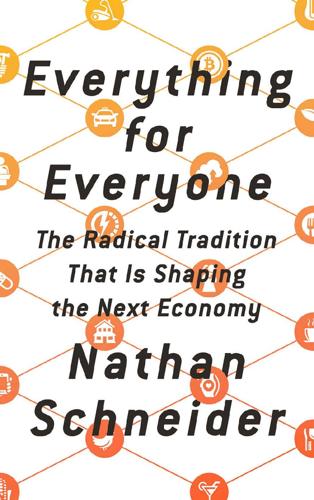
Everything for Everyone: The Radical Tradition That Is Shaping the Next Economy
by
Nathan Schneider
Published 10 Sep 2018
But when you’re accountable to fellow members, to others struggling to get by, there’s not much to like about wiping away the basis of their livelihoods. Less exposed to risk and less inclined to panic, financial co-ops and credit unions kept up deposits and kept lending after the 2008 crisis hit.8 While others were disrupting, cooperators have been innovating in their own fashion. The 1960s counterculture produced famous consumer-owned grocery stores like Brooklyn’s Park Slope Food Co-op: by the turn of the millennium, co-ops like these had helped build the global fair-trade movement for goods like coffee and chocolate, a much-needed feat of counterglobalization. The 1960s and 1970s saw a more buttoned-up kind of cooperation as well, such as when Seattle banker Dee Hock convinced Bank of America to spin off its credit-card franchise into a bank-owned cooperative, Visa.
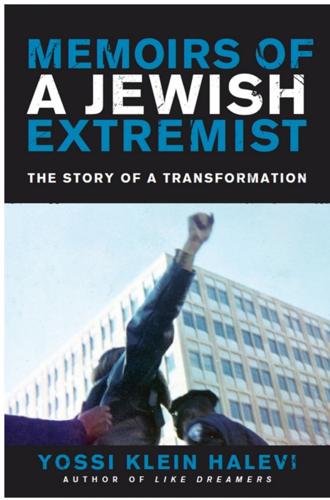
Memoirs of a Jewish Extremist: The Story of a Transformation
by
Yossi Klein Halevi
Published 13 Nov 1995
We realized that Marv was not our ideal publisher, but we also knew that no one would be mad enough to take his place. LYNN’S ROOMMATE WAS A JEWISH WOMAN named Sara, a dancer who’d spent time in Israel. In Sara’s bookcase Lynn found The Jewish Catalog, a how-to guide to Jewish rituals written in a 1960s, countercultural style; cartoons of yarmulked angels telling Jewish jokes appeared in the margins. Lynn had been raised with an aversion to fervent religion. Her mother, a former Baptist from Alabama, rejected her fundamentalist upbringing and became a liberal Yankee. Lynn’s father’s father had escaped a fundamentalist Episcopalian sect in which he’d been raised, the Catholic Apostolics, whose members believed the world was about to end and practiced an austere, Pilgrim-style Christianity.
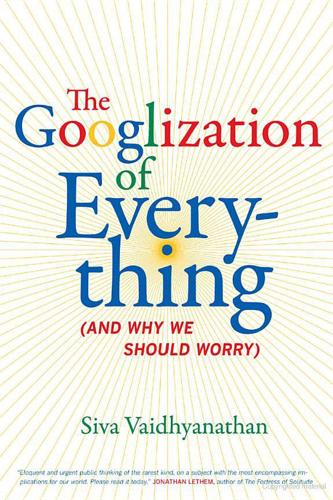
The Googlization of Everything:
by
Siva Vaidhyanathan
Published 1 Jan 2010
However, it’s a mistake to think of Google’s social influence and social role as purely a function of science and engineering. Google’s social milieu, the petri dish from which it sprang, is more than technological or scientific. As the media historian Fred Turner demonstrates in From Counterculture to Cyberculture, the ideology of Silicon Valley is rooted in the practices and idealistic visions of 1960s counterculture. It’s a peculiar story: cultural anarchism melded with technologies developed for and by the U.S. military, unleashed in the service of both commerce and creativity, yet also accused of undermining both.49 Google, in particular, incorporates a twenty-first-century form of countercultural hedonism in its corporate structure and everyday work environment: the ethos of Burning Man.
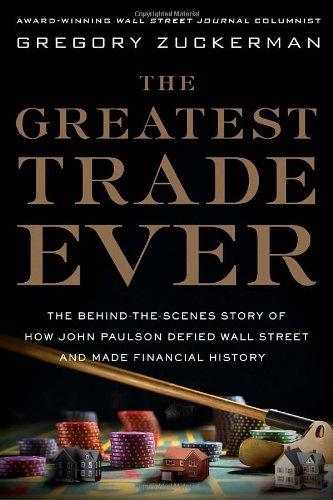
The greatest trade ever: the behind-the-scenes story of how John Paulson defied Wall Street and made financial history
by
Gregory Zuckerman
Published 3 Nov 2009
After he failed to get some journalists to focus on Congress’'s culpability, Lahde complained that the nation seemed to care less about fixing the political system than it did “"about Britney Spears’'s vagina.”" In late 2008, he threw himself into the writings of his longtime hero Timothy Leary, the 1960s counterculture icon and advocate of psychedelic-drug research. He began to warm to the idea of dropping out, as Leary advised, saying it was “"baffling”" that Paulson was still so focused on investing. Lahde found a distant island and leased a beachfront home. He snorkels most days while searching for a suitable young female partner to join him on his adventure.
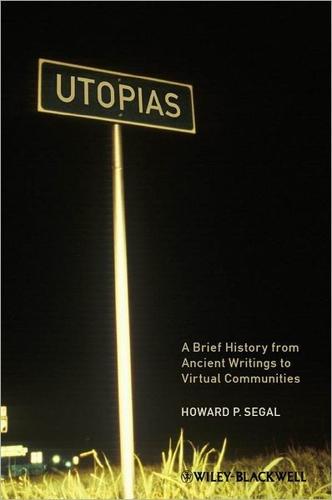
Utopias: A Brief History From Ancient Writings to Virtual Communities
by
Howard P. Segal
Published 20 May 2012
Even when, as with most of the earliest New England colonists such as the Pilgrims and the Puritans, the belief in human beings’ permanently flawed character prevailed, there was still the hope 24 The Variety of Utopias of substantial improvement by virtue of the opportunity for the comparative freedom to practice one’s religion.27 Until Robert Fogarty’s All Things New: American Communes and Utopian Movements, 1860–1914 appeared in 1990, most students of American utopian communities assumed that they had flourished only in the first half of the nineteenth century and had virtually died out until their revival in the 1960s “counterculture.” Fogarty examined 141 communities that arose between 1860 and 1914, including mystical Shalam in New Mexico, free-love Spirit Fruit in Ohio and Illinois, all-female Women’s Commonwealth in Texas, and socialist, then anarchist, Equality in Washington state. To varying degrees all were inspired by the Book of Revelations’ injunction to “make all things new” and were self-conscious about their need for journeying elsewhere in America or abroad (usually Palestine) to do so.

Against Everything: Essays
by
Mark Greif
Published 5 Sep 2016
We witnessed, after the triumph of a previously unquestioned project, a characteristic latecoming struggle around the nature and direction of progress. First, in the late 1960s, came reactions against the inhuman technical character of food science and “agribusiness.” Critics in this phase pitted themselves against consumer capitalism. This initial reaction was romantic and primitivist, associated with the late-1960s counterculture and the movement “back to the land,” just a few decades after productivity gains had led an agrarian population to leave it. It brought a call to the East for mystic authenticity in the culture of “health foods”—tofu, brown rice, yogurt, seaweed, wheat germ, made from the live spirits and microbes excluded in industrial processing.

Cataloging the World: Paul Otlet and the Birth of the Information Age
by
Alex Wright
Published 6 Jun 2014
Those counterculture idealists all opposed war and believed in the possibility of emerging technologies to usher in a new age of planetary consciousness and spiritual enlightenment. They diverged, however, in the paths they chose to pursue those exalted states. The anti-institutional animus of the 1960s counterculture stands in stark contrast to the enthusiasm felt by Paul Otlet and others for international associations, governing bodies, and associated rules and procedures. They believed in personal liberation and the disruption of what they considered anachronistic, calcified power structures. Otlet and others of the prewar generation, by contrast, placed great faith in certain kinds of organizational structures—specifically, international associations and pan-world government—that Otlet, for one, saw not as tools of bureaucracy and oppression but rather as 261 C ATA L O G I N G T H E WO R L D the engines of great cultural and social reform, and ultimately as catalysts for humanity to achieve its true potential.
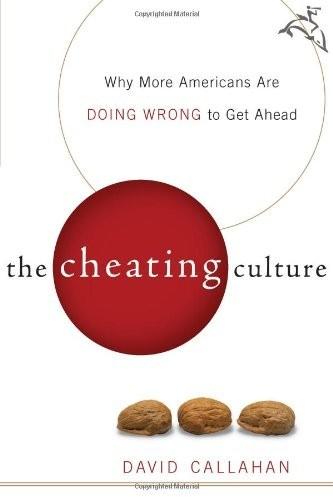
The Cheating Culture: Why More Americans Are Doing Wrong to Get Ahead
by
David Callahan
Published 1 Jan 2004
Dana, [>], [>] Luxury Fever (Frank), [>] Mahoney, David, [>] Mantione, Lianne, [>] Martinoff, Jim: and corporate ethics program, [>]–[>] materialism: conservatism and, [>]–[>] and economic pressure, [>]–[>] and happiness, [>]–[>] increase in, [>], [>], [>]–[>] and new social contract, [>]–[>], [>]–[>] 1960s counterculture and, [>]–[>] young people and, [>]–[>], [>] Mauer, Joe, [>] McBirney, Edwin, [>] McCabe, Donald: on student cheating, [>]–[>], [>], [>] McColough, Peter, [>] McGwire, Mark, [>], [>] McKinsey & Company, [>], [>], [>] media: public distrust of, [>] Medical Education Systems: and Neurontin marketing scandal, [>] medical ethics: decline in, [>]–[>], [>]–[>] and medical school programs, [>] medical schools: and ethics programs, [>] medical societies, state: inadequate discipline by, [>] Medicare and Medicaid: fraud against, [>], [>], [>], [>] Meeker, Mary, [>] Meijer, Martina, [>], [>] Mendell, Clarence W., [>] Merrill Lynch, [>]–[>], [>] Spitzer investigates, [>]–[>], [>]–[>] Merton, Robert: on ambition and deviant behavior, [>], [>] on American values, [>]–[>] Metallica: and music piracy, [>] Microsoft, [>] Milken, Michael, [>], [>] post-prison public relations campaign, [>]–[>] SEC prosecutes, [>], [>] "money culture."
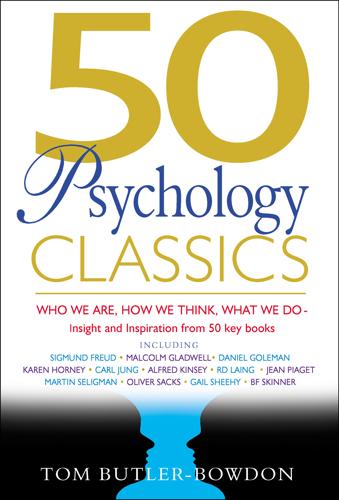
50 Psychology Classics
by
Tom Butler-Bowdon
Published 14 Oct 2007
As each feeling we are ashamed of comes to the surface, we realize it will not kill us to allow it to exist. Final comments Rogers’ impact was felt way beyond his own field of counseling psychology. His emphasis on people needing to see themselves more as a fluid process of creation rather than a fixed entity was part of the climate of ideas that led to the 1960s counter-cultural revolution, and it is easy to see his influence on today’s self-help writers. For instance, one of Stephen Covey’s “7 habits of highly effective people” is Seek first to understand, then to be understood, a very Rogerian notion that progress in relationships is never made unless the people within them feel safe to speak their mind and be heard.
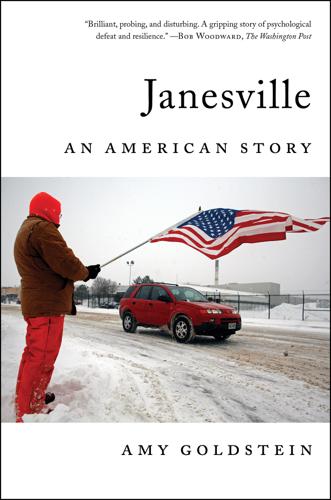
Janesville: An American Story
by
Amy Goldstein
Published 17 Apr 2017
A brass band playing the fight song, “On Wisconsin.” And, in a curious touch for the inauguration of one of the nation’s most incendiary social and economic conservatives, the Notre Dame Academy swing choir from Green Bay preceding the oath taking with a medley from Hair, the tribal-love rock opera of the 1960s counterculture that premiered on Broadway when Walker was four months old. When the time came for the gubernatorial inaugural address, Walker’s main campaign promise—to create 250,000 private sector jobs—was front and center. “My priorities are simple: jobs, jobs and more jobs,” the brand-new governor said.
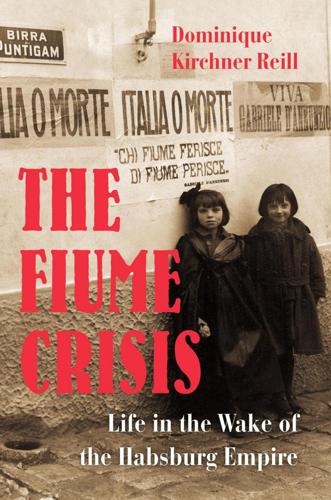
The Fiume Crisis
by
Dominique Kirchner Reill
Published 1 Dec 2020
For a brilliant discussion of how the histories of D’Annunzio in Fiume have developed, see the forthcoming article by Natka Badurina, “D’Annunzio a Fiume: La violenza politica, l’etica e la storia,” in Atti del Convegno Fiume 1919–2019: Un centenario europeo tra identità, memorie e prospettive di ricerca, Vittoriale degli Italiani (Milan: Silvana Editoriale, 2020). Notes to Pages 12–20 239 10. Claudia Salaris, Alla festa della rivoluzione: Artisti e libertari con D’Annunzio a Fiume (Bologna: Il Mulino, 2002). The analogy of D’Annunzio’s Fiume to 1960s counterculture movements began in the historiography of Fascism produced in the 1970s, most famously in the works of Renzo De Felice. It is now a common trope, most notably by Gabriele Marconi, Le stelle danzanti: Il romanzo dell’impresa fiumana (Florence: Vallecchi, 2009). 11. Mark Mazower, The Dark Continent: Europe’s Twentieth C entury (New York: Knopf, 1999).

Why We Drive: Toward a Philosophy of the Open Road
by
Matthew B. Crawford
Published 8 Jun 2020
Because the German auto industry didn’t think the car was feasible, the German Labor Front itself took command of the project, under the direction of Ferdinand Porsche. The result is the VW Beetle. It was a socialist car, then. Its low cost and folksy back story was surely part of the appeal it would come to have for peace-loving American hippies of the 1960s counterculture. But it was also a fascist car, in the precise economic meaning of fascism: its low cost was due to dictatorial power, state-directed investment, and the outlawing of independent labor organizations not controlled by the Party. Nazi perversion of the ideal of free labor, or mockery of it, are well expressed in the fact that the phrase “Labor sets you free” was posted over the entrances to several of the death camps.
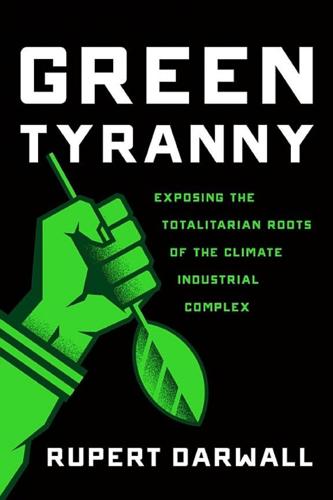
Green Tyranny: Exposing the Totalitarian Roots of the Climate Industrial Complex
by
Rupert Darwall
Published 2 Oct 2017
As Adam Tooze shows, Nazism was conceived as a radical rejection of capitalism and the Anglo-American liberal economic order, which in Hitler’s view required Germany to wage a world war to overthrow it. Thus the historical premise of the Frankfurt School was completely false. But what it succeeded in doing was to create an ideological justification for environmentalism to become a central part of the New Left’s and the 1960s counterculture’s rejection of capitalism—a post-Marxist philippic against consumerism and materialism which until then had principally been the province of reactionary, anticapitalist movements on the right and Far Right, and of National Socialism. This development was not an accident. In his 2004 book on post-modernism, the philosopher Stephen Hicks argues that by the 1950s, the failure of Marxism to develop according to the logic of traditional theory had reached a crisis.
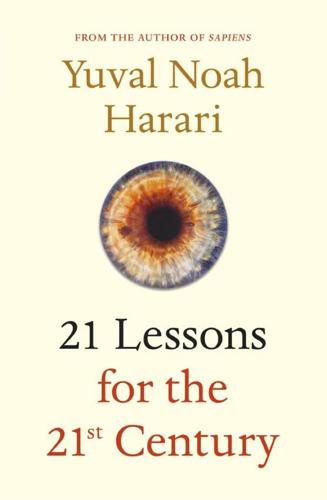
21 Lessons for the 21st Century
by
Yuval Noah Harari
Published 29 Aug 2018
Upon reaching zero, the bright flash of a nuclear explosion fills the screen, and candidate Johnson addresses the American public and says: ‘These are the stakes. To make a world in which all of God’s children can live, or to go into the dark. We must either love each other, or we must die.’2 We tend to associate the ‘make love, not war’ slogan with the late 1960s counterculture, but in fact, already in 1964 it was accepted wisdom even among hard-nosed politicians such as Johnson. Consequently, during the Cold War nationalism took a back seat to a more global approach to international politics, and when the Cold War ended, globalisation seemed to be the irresistible wave of the future.
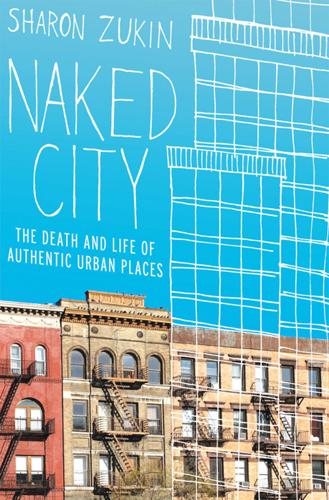
Naked City: The Death and Life of Authentic Urban Places
by
Sharon Zukin
Published 1 Dec 2009
The boutiques on the block draw shoppers in their twenties and thirties, college students, and tourists who want items with a unique look, such as old eyeglass frames, jelly jars, and wind-up alarm clocks; these flea market finds are specialized goods for a niche market. In their own way, the shop owners on East Ninth Street are selling kairological images of consumer culture. They know the value of authenticity, the kind of authenticity that connects the self-awareness of the 1960s counterculture to the “mobile awareness of personal and individual lifestyle” typical of consumers today. Their shops reflect the “class worlds” that dominate the East Village now: both elegant and derelict, hippie and yuppie, distinctive and diverse.10 The “authentic” East Village: stores on East Ninth Street.
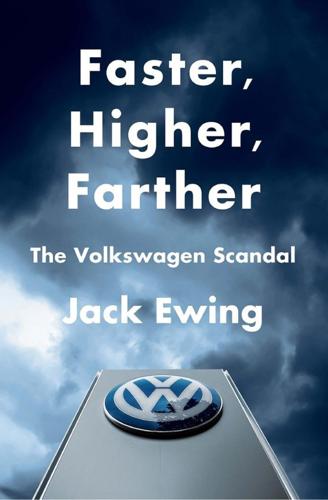
Faster, Higher, Farther: How One of the World's Largest Automakers Committed a Massive and Stunning Fraud
by
Jack Ewing
Published 22 May 2017
Other ads claimed that Volkswagen left the body design the same so that it could spend the money on mechanical improvements. In fact, Volkswagen had grown complacent. Heinrich Nordhoff, who remained chief executive until 1967 and died in 1968, had initially not thought much of the Beetle but then was slow to push for something to follow it. After the introduction of a van in 1950, which won its own place in the 1960s counterculture, there was no completely new model until 1961, when Volkswagen began selling the 1500, a more conventional-looking sedan. The 411, a midsize car that came in hatchback and station wagon versions, went on sale in 1968. Both the 1500 and the 411 had air-cooled motors mounted over the rear wheels, an increasingly outdated technology despite Volkswagen’s attempts to use the Porsche racing program to portray it otherwise.
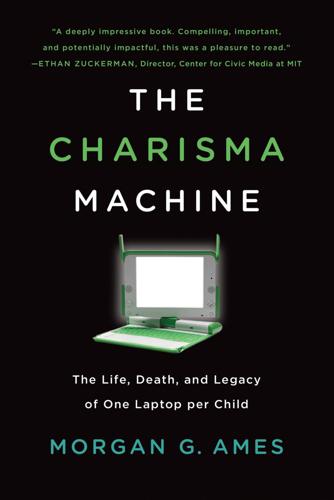
The Charisma Machine: The Life, Death, and Legacy of One Laptop Per Child
by
Morgan G. Ames
Published 19 Nov 2019
Gabriella Coleman examines this context in detail, charting the heterogeneous movements that fall under the umbrella of “hackers” and showing that Levy’s account is specific to MIT rather than being indicative of hackers more broadly—though it is at least legible across much of the technology world (see, e.g., Coleman, “Hacker Conference”; Coleman and Golub, “Hacker Practice”; Coleman, Coding Freedom). Tying this hacker ethos to the material world, cultural historian Fred Turner shows how the hacker identity was actively constructed at the first Hackers Conference in 1984 in relation to Levy’s “hacker ethic,” the 1960s counterculture, and certain forms of work (Turner, “Digital Technology”). Bringing in the social and legal ramifications of hacking, critical media theorist Helen Nissenbaum discusses how this hacker identity is contested and has changed from being positive and countercultural in the 1980s to one associated with criminality outside of hacker circles in the 1990s due to changes in the computing industry, hacker values, laws, and popular culture (Nissenbaum, “Hackers and the Contested Ontology of Cyberspace”).

Tripping on Utopia: Margaret Mead, the Cold War, and the Troubled Birth of Psychedelic Science
by
Benjamin Breen
Published 16 Jan 2024
Yet, despite his own ambivalence toward psychedelics, Bateson did not join the forces arrayed against the psychedelic counterculture. In fact, in the months that followed, he aligned himself with it. One of the only surviving clips from the two-week event that cemented Gregory Bateson’s reputation among the 1960s counterculture captures Emmett Grogan, founder of the anarchist Diggers collective, delivering a passionate speech in praise of violence. It is mid-July 1967. Grogan is wearing enormous black sunglasses that reflect the circular banks of lights in a large London auditorium. “Violence is, and will always be, necessary to tear away the shreds of myth and absurdity that we’ve been encased in since we were born,” he declares.
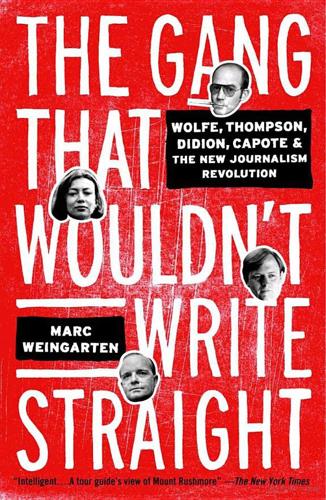
The Gang That Wouldn't Write Straight: Wolfe, Thompson, Didion, Capote, and the New Journalism Revolution
by
Marc Weingarten
Published 12 Dec 2006
Gingrich was already making the magazine more of a repository for serious critical thought, hiring Dwight Macdonald to review films, Kingsley Amis to cover “art films,” and Dorothy Parker to critique the latest fiction. Felker brought his college buddy Peter Maas into the fold to write features, as well as sociologist Paul Goodman, whose 1960 book, Growing Up Absurd, had mapped the incipient rebellion against established values that would culminate in the 1960s counterculture. Quality fiction had remained a constant, with contributions from such luminaries as William Styron, John Cheever, and Robert Penn Warren. But Felker and Hayes wanted to move in another direction with the magazine’s journalism. At Duke, Felker had trolled the library stacks in search of exciting precedents for him to follow at the Chronicle and came across Civil War-era back issues of the New York Herald Tribune, the great newspaper edited by the social reformist Horace Greeley.
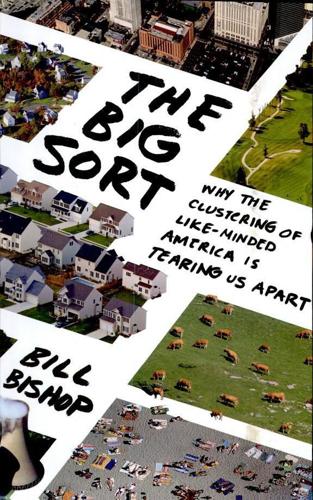
The Big Sort: Why the Clustering of Like-Minded America Is Tearing Us Apart
by
Bill Bishop
and
Robert G. Cushing
Published 6 May 2008
By the early 1970s, church leaders and scholars noticed two distinct trends: (i) people were leaving mainline Protestantism—Methodists, Presbyterians, Episcopalians—and (2) people were joining Evangelical and conservative churches that were often independent of any denomination. A debate ensued about why conservative churches were growing while the sanctuaries at mainline denominations were emptying. Some argued that the 1960s counterculture led baby boomers out of their parents' churches. Others said that churches would naturally decline as society became richer—the old secularization argument that as societies grow more educated, people become less likely to be formally religious. Dean Kelley, author of Why Conservative Churches Are Growing, argued that mainline denominations had gotten flabby.

Hacker, Hoaxer, Whistleblower, Spy: The Story of Anonymous
by
Gabriella Coleman
Published 4 Nov 2014
He saw the utility of learning from these people. And then, as he explained, a little later, “[President] Bush stole the election, 9/11 happened, and the Patriot Act was passed.” At the age of twenty, he cofounded a radical webzine called Hack this Site—its title riffing on Steal this Book, the 1960s counterculture manual-manifesto written by Abbie Hoffman. (The Yippies published the first hacker/phreak zine, The Youth International Party Line, which advocated ripping off AT&T, aka “Ma Bell,” as a revolutionary act. Its successor publication, Technical Assistance Program (TAP), would shed the overtly leftist political rhetoric.)
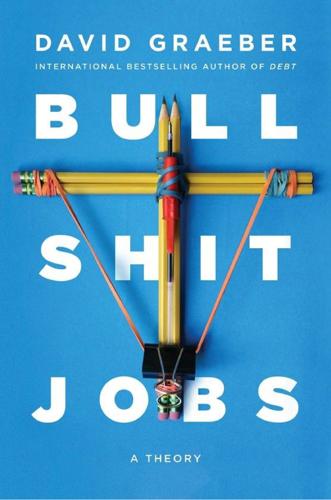
Bullshit Jobs: A Theory
by
David Graeber
Published 14 May 2018
This obviously not only completely ignored the caring aspects of real labor, it also assumed property relations were unalterable, and that human beings—at least, those who were not, say, science-fiction writers—were so completely unimaginative that even with unlimited free time, they would be unable to come up with anything particularly interesting to do.7 The 1960s counterculture challenged the second and third assumptions (though not so much the first one), with many sixties revolutionaries embracing the slogan “Let the machines do all the work!” This in turn led to a renewed backlash of moralizing about work as a value in itself of the sort we’ve already encountered in chapter 6—at the same time as an export of many factory jobs to poor countries where labor was cheap enough it could still be performed by human beings.
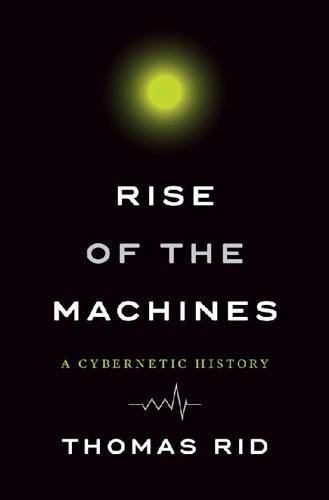
Rise of the Machines: A Cybernetic History
by
Thomas Rid
Published 27 Jun 2016
The dream about the day after the strike was harsh: “There was chaos, and then I looked around and I was the only person left alive in Rockford, Ill., a knee-high creature.”28 He wanted out, to escape the specter of nuclear annihilation. Brand is best known for founding the famous Whole Earth Catalog, a publication that itself became an emblem and icon of California’s late 1960s counterculture and back-to-the-land movement. One afternoon, probably in March 1966 in the hills of San Francisco, Brand dropped a bit of LSD and went up on a roof overlooking the city. It was a form of escape. He sat in a blanket, shivering in the cold spring air, overlooking the hills, lost in enhanced thought: And so I’m watching the buildings, looking out at San Francisco, thinking of Buckminster Fuller’s notion that people think of the earth’s resources as unlimited because they think of the earth as flat.

Dreamland: The True Tale of America's Opiate Epidemic
by
Sam Quinones
Published 20 Apr 2015
It was this: If a patient said he was in pain, doctors should believe him and prescribe accordingly. This attitude grew from a patients’ rights movement that sprung in part from the Nuremberg Trials, where Nazi doctors were found to be experimenters who disregarded patients’ autonomy, and later from the 1960s counterculture that suspected the motives of all established institutions, medicine included. With the WHO Ladder, doctors’ concern over the use of opium-derived drugs began to ease. They were, after all, remarkably effective at knocking down pain, which was now a human right. Worldwide morphine consumption began to climb, rising thirtyfold between 1980 and 2011.
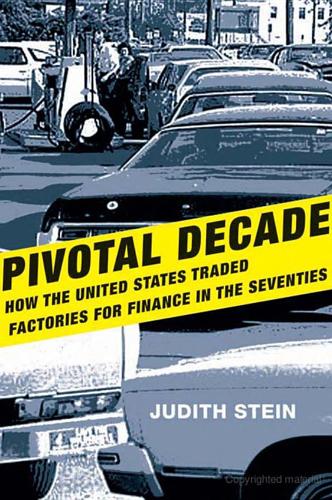
Pivotal Decade: How the United States Traded Factories for Finance in the Seventies
by
Judith Stein
Published 30 Apr 2010
He did not label his course of action Keynesian, but the words required no label. Even the values issue was not so simple. Despite Nixon’s small-town, Quaker upbringing, his service in the uptight, button-down Eisenhower administration, and his 1968 campaign against hippies, he embraced elements of the 1960s counterculture. Surveying the nation’s troubles, he invoked Roosevelt’s 1933 inaugural address. The Democratic president had judged the nation’s deficiencies to be “material.” “Thank God,” FDR said, “the American spirit was intact” and could be marshaled to produce the plenty so absent from the American larder in 1933.

Digital Apollo: Human and Machine in Spaceflight
by
David A. Mindell
Published 3 Apr 2008
The moon project resonated within a culture deeply concerned with the social implications of technology. It was conceived in the wake of Russia’s Sputnik success and in the early Kennedy years when large-scale science and technical and managerial projects seemed to promise solutions to political problems. But Apollo unfolded in the era of Vietnam, 1960s counterculture, and increasing questioning of the social benefits of large technological systems. Commentators worried about the phenomenon of ‘‘deskilling’’ as computerized machine tools transformed work on the factory floor.20 In his speeches and writings, for example, Martin Luther King frequently mentioned automation as a cause of the social displacements he was seeking to redress.
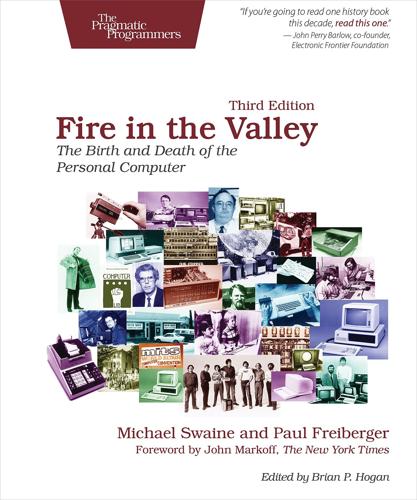
Fire in the Valley: The Birth and Death of the Personal Computer
by
Michael Swaine
and
Paul Freiberger
Published 19 Oct 2014
–Don Lancaster, early computer hobbyist and writer By the mid- to late-1970s, the fire of invention burned brightly in Silicon Valley, fueled by a unique environment of universities and electronics and semiconductor firms, and the legacy of revolutionary fervor left by the Berkeley Free Speech Movement and 1960s counterculture values. But tinder sparks were igniting in scattered places throughout the country. Some of those figurative sparks were fanned by a man who actually spent his days watching for real fires. The Fire Spotter Don Lancaster wasn’t your typical aerospace engineer. He had gone to work for a defense contractor in the 1960s as a way of avoiding the Vietnam draft, but wasn’t too thrilled to find himself working for a company that produced machines designed to kill people.

Smart Cities: Big Data, Civic Hackers, and the Quest for a New Utopia
by
Anthony M. Townsend
Published 29 Sep 2013
The enormous cultural impact of that psychedelic freak-out on American society can be felt today, and it still casts a long shadow over San Francisco. There, Hirshberg has been a driving force behind a new creative space just down the hill from Haight-Ashbury, the Gray Area Foundation for the Arts. Both physically and spiritually, it sits at the intersection of that 1960s counterculture and a new techno-utopianism. It’s just a few steps to either Twitter’s headquarters or the head office of Burning Man, the radical art festival that builds a temporary city in the Nevada desert each summer. Though he takes inspiration from the hippies, Hirshberg is politically pragmatic. He soon slaps his laptop shut and stops playing dumb.
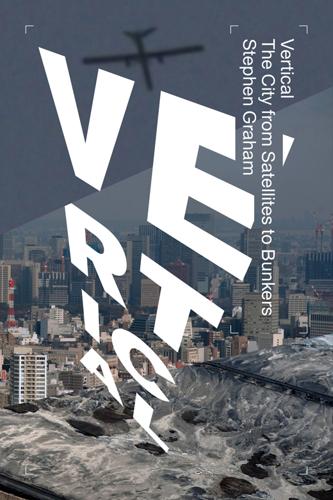
Vertical: The City From Satellites to Bunkers
by
Stephen Graham
Published 8 Nov 2016
Basement/Cellar: Urban Undergrounds 1Will Hutton, ‘Britain Is Scared to Face the Real Issue – It’s All About Inequality’, Observer, 19 January 2014. 2Cited in John McCarthy and Ross Kilgour, ‘Planning for Subterranean Residential Development in the UK’, Planning Practice and Research, 26:1, 2011, pp. 71–94. 3These details are drawn from Oliver Wainwright, ‘“Billionaires’ Basements”: The Luxury Bunkers Making Holes in London Streets’, Guardian, 9 November 2012. 4Quoted in Wainwright, ‘Billionaires’ Basements’. 5Cited in Peter Ackroyd, London Under: The Secret History Beneath the Streets, London: Random House, 2011, p. 7. 6Jabob Riis, How the Other Half Lives, New York: Dover, 1971(1901). 7Thomas Heise, Urban Underworlds: A Geography of Twentieth-Century American Literature and Culture, New York: Rutgers University Press, 2011, p. 61. 8Riis, How the Other Half Lives, p. 17. 9Heise, Urban Underworlds, p. 63. 10Friedrich Engels, The Housing Question, New York: International Publishers, 1935, pp. 74–7. 11Gunnar Myrdal, Challenge to Affluence, New York: Random House, 1963, pp. 40–41 and 53. 12The ‘old mole’ phrase derives originally from Marx. Cited in Christoph Lindner, and Andrew Hussey, eds, Paris-Amsterdam Underground: Essays on Cultural Resistance, Subversion, and Diversion, Amsterdam: Amsterdam University Press, 2014, p. 8. American novelist and ‘beatnik’ poet Jack Kerouac, a luminary in the 1950s and the 1960s counterculture, similarly titled one of his books The Subterraneans (1958). 13Djuna Barnes, Nightwood, New York: New Directions, 1961, p. 240, cited in Heise, Urban Underworlds, p. 99. See also Scott Herring, Queering the Underworld: Slumming, Literature, and the Undoing of Lesbian and Gay History, Chicago: University of Chicago Press, 2009. 14Le Corbusier, Precisions: On the Present State of Architecture and City Planning, Cambridge, MA: MIT Press, 1991, pp. 38–40. 15David Gissen, Subnature: Architecture’s Other Environments, New York: Princeton Architectural Press, 2009, p. 34. 16Gaston Bachelard, The Poetics of Space, Boston: Beacon Press, 1992, p. 23. 13.
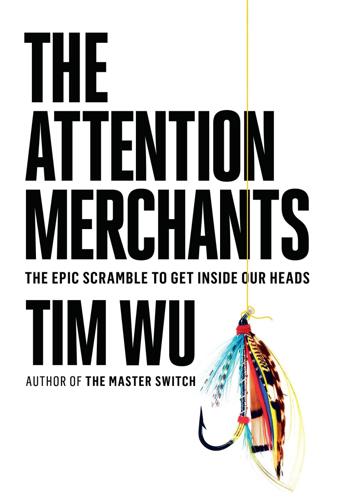
The Attention Merchants: The Epic Scramble to Get Inside Our Heads
by
Tim Wu
Published 14 May 2016
Not that commerce had ground to a halt: everyone was using Google to find things they needed, and perhaps a few they didn’t. The ones suffering for this happy state of affairs were those industries that had spent the past century devising how best to get people to look at them and listen, to enjoy their diversion and tolerate a word from their sponsors. In that way the early web was exactly like the 1960s counterculture: it encouraged both a Great Refusal of what had always been handed down from on high, and asked people to spend more time with each other. It asserted that money need not be involved in attentional barter, and that everyone had an inherent potential to be a creator. In the early days at some companies, like Google, the link was more explicit, with much of the company retreating to the Burning Man festival every year and management espousing the value of putting in place a practical, pragmatic implementation of the counterculture’s ideas.

From Counterculture to Cyberculture: Stewart Brand, the Whole Earth Network, and the Rise of Digital Utopianism
by
Fred Turner
Published 31 Aug 2006
As they turned away from agonistic politics and toward technology, consciousness, and entrepreneurship as the principles of a new society, the communards of the 1960s developed a utopian vision that was in many ways quite congenial to the insurgent Republicans of the 1990s. Although Newt Gingrich and those around him decried the hedonism of the 1960s counterculture, they shared its widespread affection for empowering technologically enabled elites, for building new businesses, and for rejecting traditional forms of governance. And as they rose to power, more than a few rightwing politicians and executives longed to share the hip credibility of people like Stewart Brand.

Active Measures: The Secret History of Disinformation and Political Warfare
by
Thomas Rid
In January 1974, CARIC and the Fifth Estate joined forces and formed the Organizing Committee for a Fifth Estate. The Fifth Estate was a volunteer organization, with new headquarters established at 2000 P Street NW, just off Dupont Circle in Washington, D.C. The Fifth Estate grew out of late-1960s counterculture, and was especially inspired and modeled on the Whole Earth Catalog, then a cult publication. Produced in the San Francisco Bay Area by Stewart Brand, an iconic, technology-embracing hippie maven, the Whole Earth Catalog was an early techno-utopian vision of back-to-the-land living that embraced cybernetic feedback loops, community, wholeness, flattened hierarchies, and the motto “access to tools.”
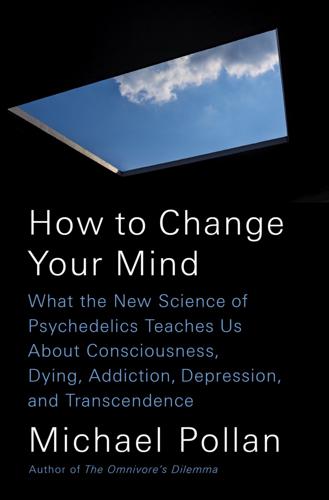
How to Change Your Mind: What the New Science of Psychedelics Teaches Us About Consciousness, Dying, Addiction, Depression, and Transcendence
by
Michael Pollan
Published 30 Apr 2018
Their journeys unfold in a landscape of medical suites populated, figuratively speaking, by men and women in white coats. I suppose this is the usual distancing effect of modern science at work, but here it is compounded by a specific desire to distance psilocybin from its tangled roots (or I should say, mycelia) in the worlds of 1960s counterculture, Native American shamanism, and, perhaps, nature itself. For it is there—in nature—that we bump up against the mystery of a little brown mushroom with the power to change the consciousness of the animals that eat it. LSD too, it is easy to forget, was derived from a fungus, Claviceps purpurea, or ergot.

Animal Spirits: The American Pursuit of Vitality From Camp Meeting to Wall Street
by
Jackson Lears
For Roszak, “the decisive measure of the technocracy’s essential criminality” was “the extent to which it insists, in the name of progress, in the name of reason, that the unthinkable become thinkable and the intolerable become tolerable.” A particular, historically shaped way of thinking had enshrined madness as a form of rationality. Romantic poets, as Roszak observed, had anticipated the critique of technocratic rationality. He provided a deep genealogy of the 1960s counterculture, citing Shelley’s influential announcement that in defense of poetry we must invoke “light and fire from those eternal regions where the owl-winged faculty of calculation dare not ever soar.” The assumption that the free play of imagination required the rejection of calculation was itself a failure of imagination; numbers can stir fresh thought as well as stabilize uncertainty and provide necessarily precise knowledge.

A Generation of Sociopaths: How the Baby Boomers Betrayed America
by
Bruce Cannon Gibney
Published 7 Mar 2017
“Protest: The Banners of Dissent.” Time. 27 Oct. 1967, content.time.com/time/magazine/article/0,9171,841090,00.html. 5. Gitlin, Todd. The Sixties: Years of Hope, Days of Rage. Revised ed., Bantam, 1 July 1993, p. 214. 6. Cottrell, Robert C. Sex, Drugs and Rock ’n’ Roll: The Rise of America’s 1960s Counterculture. Rowman & Littlefield, 19 Mar. 2015, p. 88. 7. The New York Times: The Times of the Sixties: The Culture, Politics and Personalities That Shaped the Decades. Edited by John Rockwell. Black Dog & Leventhal, 2014, p. 152. 8. “Gallup Finds Rise in Marijuana Use,” New York Times, 6. Feb. 1972, p. 36 (polling college students and finding under 5 percent had tried marijuana in 1967, rising to 42 percent by 1970 and then a majority by the end of 1971; of that majority, four out of five had used it in the past year and three out of five in the past month).
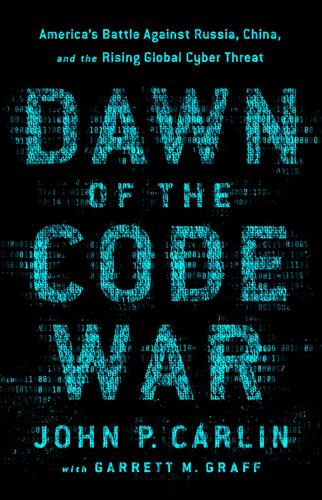
Dawn of the Code War: America's Battle Against Russia, China, and the Rising Global Cyber Threat
by
John P. Carlin
and
Garrett M. Graff
Published 15 Oct 2018
What we think of today as the rise of the computer really was two separate evolutions: one focused on large-scale corporate and government computer use, centered on the East Coast among defense companies and early tech giants such as IBM, as well as a more organic personal computing revolution, centered on the West Coast around Stanford, Berkeley, and what would become Silicon Valley. The two computing revolutions came with vastly different philosophies. The ethos of East Coast computers was solidly establishment, with deep ties to MIT, Harvard, and the Pentagon, whereas the West Coast was solidly 1960s counterculture.* It was a movement that was deeply distrustful of governmental power, a reaction of an era that saw the exposure of J. Edgar Hoover’s domestic spying, Watergate, the Church Committee, and the passage of the 1974 Privacy Act to restrict government information gathering. Another key West Coast voice, Stewart Brand, of the Whole Earth Catalog, gave his colleagues a rallying cry: “Information wants to be free.”

We the Corporations: How American Businesses Won Their Civil Rights
by
Adam Winkler
Published 27 Feb 2018
Despite Bopp’s expertise in campaign finance, his track record of success at the Supreme Court, and his commitment to Bossie’s cause, the lawyer from Terre Haute was seemingly destined to be thought of as second best when compared to a quintessential Washington player like Olson.36 * * * SAMUEL ALITO WAS TO the Supreme Court bench what Jim Bopp was to the Supreme Court bar. Both were brilliant lawyers whose work, at the highest levels of the law, brought them to Washington, where neither quite fit in. Both were strong social conservatives whose political philosophies were formed in reaction to the 1960s counterculture. And they would both play central though easily overlooked roles in the Citizens United case. Bopp’s contributions would be obscured because he withdrew from the case after David Bossie hired Ted Olson, unwilling to be second string to Olson. Alito’s influence could be missed because he would not write any opinion in the case.

Generations: The Real Differences Between Gen Z, Millennials, Gen X, Boomers, and Silents—and What They Mean for America's Future
by
Jean M. Twenge
Published 25 Apr 2023
Still, at ages 65 to 74 in 2020, 72% of retirement-age Boomer men lived with their spouse, and 57% of women did. Nevertheless, Boomer men are more likely than earlier generations to live alone, a trend that may increasingly impact families and the health care system in the future. It’d Be a Lot Cooler If You Did: Drugs, Alcohol, and Cigarettes Trait: Comfort with Drug Use Boomers and the 1960s counterculture are inextricably linked in the popular imagination. That meant drugs, from marijuana to LSD (“Turn on, tune in, drop out”). So how much of the drug culture of the 1960s and 1970s was rumor, and how much was reality? Is it just a perception that Silents and Greatests rarely touched drugs, and that everything changed with the Boomers?
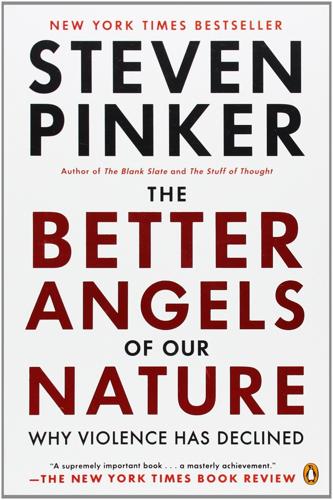
The Better Angels of Our Nature: Why Violence Has Declined
by
Steven Pinker
Published 24 Sep 2012
Dionysian cultures apologies Aquinas, Saint Thomas Arafat, Yasir archaeology Archer, John Archimedes Ardipithecus ramidus Arendt, Hannah Argentina aristocrats deaths from violence Aristophanes, Lysistrata Aristotle armed forces: as band of brothers conscription of effectiveness of Ethical Marine Warrior file closers mercenary military revolution reluctance to shoot size of willingness to die Armenians, genocide of Aronson, Elliot Asal, Victor Asch, Solomon Ash-Sheikh, Abdulaziz Asia: abortion in female infanticide in historiography in homicide rates in hunter-gatherers in legal discrimination in massacres in New Peace in spanking in violence against animals in violence against women in wars in assassinations; see also regicide Astell, Mary Athens, democracy in Atlas, Charles Atran, Scott atrocities, twenty worst in history attention deficit hyperactivity disorder Atwood, Brian Augustine, Saint Australia domestic violence in homicide in peace imposed in New Guinea penal colony warfare among aborigines australopithecenes Austria-Hungary autarky; see also trade, international Authority Ranking autocracy and Age of Nationalism and democide Islamic punishment in and the social dilemma autonomic nervous system Autonomy, ethic of availability heuristic Axelrod, Robert Aztecs baby boomers: crime among influence of television on and 1960s counterculture Bacon, Francis balance of power balance of terror Bales, Kevin Bandura, Albert Bangladesh Barbara, Saint Barth, Karl Batson, Daniel Baumeister, Roy Evil and self-control Bays, Paul Beatles Beccaria, Cesare On Crimes and Punishments Beirut, U.S. servicemen bombed in Belarus Belgium Bell, David Bell, Derrick bell curve, see normal distribution Belloc, Hillaire Benedict, Ruth, Patterns of Culture Bentham, Jeremy Berlin, Isaiah Berlin Wall Bethmann-Hollweg, Theobald von Betzig, Laura Bhagavad-Gita Bhutto, Benazir Bible: capital punishment in debt bondage in historical analysis of and homophobia human sacrifice in and legislation New Testament Old Testament popularity of slavery in Big Parade, The (film) Bill of Rights, U.S.
…
Nobel, Alfred Noble Savage myth nonstate societies: cooperation in data sources of deaths from warfare in emergence of fighting in violence rates in norepinephrine normal distribution norms: of civilized society and crime rates of etiquette evaluation of informal internalized and morality in 1960s counterculture of nonviolence of purity social tacit territorial integrity of war as immoral see also etiquette; moral sense; taboos North Korea noses: blowing cutting off Nuclear Nonproliferation Treaty nuclear peace theory nuclear taboo nuclear terrorism nuclear threat nuclear weapons Nunberg, Geoffrey Nunn, Sam Nuremberg Trials nursery rhymes Nurture Assumption Nussbaum, Martha Oatley, Keith Obama, Barack obedience; see also Milgram, Stanley Odysseus Oklahoma City bombing Olds, James Oneal, John One Flew Over the Cuckoo’s Nest (film) openness to experience Operation Ceasefire Opium Wars Oppenheimer, Robert opponent-process theory of emotion optimal foraging orientation, long- vs. short-term Orwell, George Otterbein, Keith Ottoman Empire Ötzi the Iceman overconfidence Owen, Wilfred oxytocin Oz, Amos Pacification Process civilization human societies introduction of concept logic of violence use of term violence in human ancestors violence in state and nonstate societies Pacific Northwest pacifism Pacifist’s Dilemma and empathy and feminization and gentle commerce and Leviathan and reason Pakistan Al Qaeda in and India and terrorism Pale of Settlement Palestine Panksepp, Jaak Papua New Guinea; see also New Guinea Parachini, John paramilitaries Pareto, Vilfredo Pareto Principle Parker, Theodore Parks, Rosa Pascal, Blaise pastoralism Pate, Amy Patrick, Saint patrilocal societies Patterson, Orlando Patz, Etan Pauling, Linus Paul IV, Pope Payne, James L.

Tesla: Inventor of the Electrical Age
by
W. Bernard Carlson
Published 11 May 2013
Nevill Drury, The New Age: Searching for the Spiritual Self (London: Thames and Hudson, 2004), 12. 9. F. David Peat, In Search of Nikola Tesla, rev. ed. (London: Ashgrove, 2003). 10. Seifer, Wizard, 460–61. 11. Nikola Tesla: Discovering the Future (Swiss Tesla Institute, 2008), p. 28, http://swisstesla.com/. 12. The critique that technologists have no soul is very much a 1960s counterculture attack based on a skewed reading of C. P. Snow’s The Two Cultures and the Scientific Revolution (New York: Cambridge University Press, 1959). For a challenge to this critique, see Samuel P. Florman, The Existential Pleasures of Engineering (New York: St. Martin’s Press, 1976). 13. Posting by Mike, 12 January 2009, on “Feel the Heat: Tesla Roadshow Hits Miami during Art Basel” Blog, Tesla Motors, http://www.teslamotors.com/blog3/?
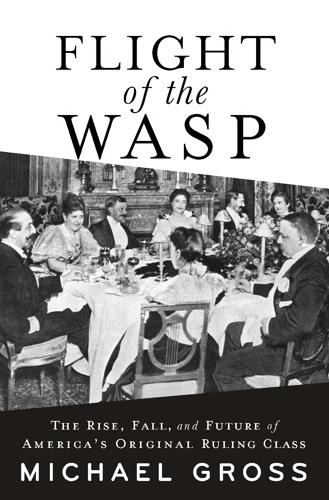
Flight of the WASP
by
Michael Gross
Like the promiscuous and brilliant bisexual writer Gore Vidal, one year older than he and also descended from a colonial family with roots in Great Britain, Butler was part of the avant-garde, a sort of spiritual godfather of the crowd of maverick WASPs who followed in the early 1960s, inspiring arguments over whether they were well-born rebels or just spoiled brats. Among them were Tommy Hitchcock’s grandson William Mellon “Billy” Hitchcock, who would, like Michael Butler, refuse to conform to patrician expectations. Instead, he became another significant figure in the 1960s counterculture as part of a conspiracy to manufacture and sell the drug LSD.d Others included acolytes of the artist Andy Warhol like Brigid “Polk” Berlin and Edie Sedgwick, the artist and fashion designer Gloria Vanderbilt, and the debutante Fernanda Wanamaker Wetherill, whose 1963 debut featured guests swinging from chandeliers, splintering furniture, smashing china and windows, shooting bottles with air rifles, dancing on a mantelpiece, and dangling from the rafters of the Southampton, Long Island, beach house where an all-night afterparty led to a grand jury charging fourteen guests (five of them listed in the Social Register) with willful destruction of property.

The Innovators: How a Group of Inventors, Hackers, Geniuses and Geeks Created the Digital Revolution
by
Walter Isaacson
Published 6 Oct 2014
This utopian vision, he added, was “in line with the romantic fantasies of the forefathers of the science, such as Norbert Wiener, J. C. R. Licklider, John von Neumann, and Vannevar Bush.”15 All of these experiences led Brand to become the impresario and techie for one of the seminal events of the 1960s counterculture, the January 1966 Trips Festival at Longshoreman’s Hall in San Francisco. After the joys of the Acid Tests, which had been held weekly throughout December, Brand proposed to Kesey that they throw a blowout version that would last for three days. The extravaganza opened with Brand’s own troupe, America Needs Indians, performing a “sensorium” that included a high-tech light show, slide projectors, music, and Native American dancers.

This Changes Everything: Capitalism vs. The Climate
by
Naomi Klein
Published 15 Sep 2014
If the greens have their way, Morano warns, we will be looking at “a CO2 budget for every man, woman, and child on the planet, monitored by an international body.”4 Next is Chris Horner, a senior fellow at the Competitive Enterprise Institute who specializes in harassing climate scientists with burdensome lawsuits and Freedom of Information Act fishing expeditions. He angles the table mic over to his mouth. “You can believe this is about the climate,” he says darkly, “and many people do, but it’s not a reasonable belief.” Horner, whose prematurely silver hair makes him look like Anderson Cooper’s frat boy doppelgänger, likes to invoke 1960s counterculture icon Saul Alinsky: “The issue isn’t the issue.” The issue, apparently, is that “no free society would do to itself what this agenda requires. . . . The first step to [doing] that is to remove these nagging freedoms that keep getting in the way.”5 Claiming that climate change is a plot to steal American freedom is rather tame by Heartland standards.

Rough Guide to San Francisco and the Bay Area
by
Nick Edwards
and
Mark Ellwood
Published 2 Jan 2009
Don’t let the strange name put you off (it’s named after the grandfather of the current owner); this traditional 1940s supper club with its plush red decor and tuxedoed bar staff offers more than just Frank Sinatra tribute bands. The savvy booker here schedules underground European acts, kitschy tribute bands, and big-name rock acts in equal proportion. $20 and up. The Fillmore 1805 Geary St at Fillmore, Japantown t 415/346-6000, wwww .thefillmore.com. A local landmark, the Fillmore was at the heart of the 1960s counterculture, when it was masterminded by the legendary Bill Graham. It reopened in 1994 after several years’ hiatus and is home now to mainly rock acts. Cover varies. The Great American Music Hall 859 O’Farrell St at Polk, Tenderloin t415/885-0750, wwww .musichallsf.com. Starting out as a bordello in the 1900s, the Music Hall’s fortunes soon went into decline.

The Stack: On Software and Sovereignty
by
Benjamin H. Bratton
Published 19 Feb 2016
While the company's roots extend back into mid-1970s Northern California hippie hacker culture, in important ways the Apple weltanschauung was not crystallized until the airing of Lee Clow and Ridley Scott's Superbowl TV ad in and of the year 1984.57 Here the driving theologic dichotomy of the brand is established, cleaving the line between Apple (individual, color, youth, cool, iconoclast) and IBM (mass, monochrome, old, awkward, hierarchical), a creed equally appealing to 1960s counterculture and its boomer aftermath, as it is to the John Wayne wing of the American Right. An LSD-eating Buddhist and his gentle programmer pal set in motion what would become Rush Limbaugh's favorite company.58 The story of the company and its brand have provided privileged archetypes to postindustrial capitalism: a populist concept, rejection by the old guard, a near-death experience, the return of the True Idea, blockbuster appliances, an actual death and hagiographic reverence, the passing of the doctrine, and so on.

Coastal California
by
Lonely Planet
During the affluent 1950s, the Beat movement in San Francisco’s North Beach railed against the banality and conformity of suburban life, instead choosing bohemian coffeehouses for jazz, poetry and pot. When the postwar baby boomers came of age, many hippies took up where the Beat generation left off, heeding 1960s countercultural icon Timothy Leary’s counsel to ‘turn on, tune in, and drop out.’ Sex, drugs and rock and roll ruled the day. With the foundations for social revolution already laid, protestors marched against the Vietnam War and for civil rights in the late 1960s, then again for gay liberation in the ’70s.
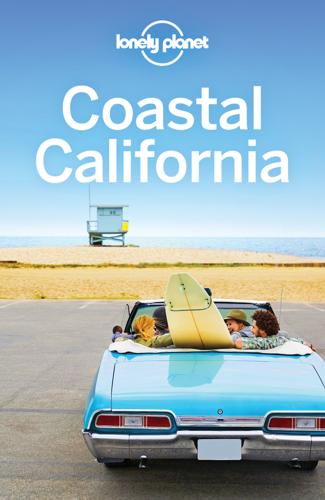
Coastal California Travel Guide
by
Lonely Planet
During the postwar boom of the 1950s, the Beat movement in San Francisco’s North Beach railed against the banality and conformity of suburban life, instead choosing bohemian coffeehouses for jazz, poetry and pot. When the baby boomers came of age, many hippies took up where the Beat generation left off, heeding 1960s countercultural icon Timothy Leary’s counsel to ‘turn on, tune in, and drop out.’ Sex, drugs and rock and roll ruled the day. With the foundations for social revolution already laid, protestors up and down California’s coast marched against the Vietnam War and for civil rights in the late 1960s, then again for gay liberation starting in the ’70s.
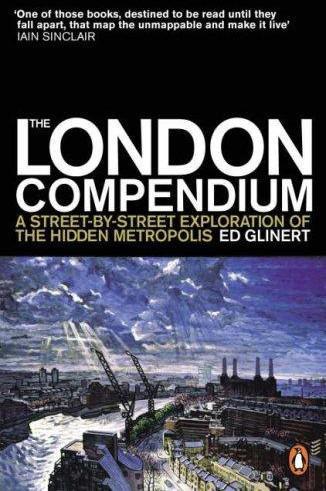
The London Compendium
by
Ed Glinert
Published 30 Jun 2004
In his 1954 book The Colour Bar Constantine explained that ‘most British people would be quite unwilling for a black man to enter their homes, nor would they wish to work with one, nor stand shoulder to shoulder with one at a factory bench’. The hotel, built from 1905–11, was designed with many ornate flourishes by Charles Fitzroy Doll and included a Winter Garden and Turkish Baths. • The West Indies at Lord’s, p. 369. International Times (1966–8), No. 102 International Times (IT), the main journal of London’s 1960s counter-culture, began publishing its uncompromising mix of offbeat articles, drug information, iconoclasms of sexual taboos and paeans to avantgarde literature, art and music in 1966 in what had previously been the Indica bookstore. Early issues included pieces on the surrealist André Breton, the Vietnam War, Yoko Ono’s exhibitions and Ezra Pound’s pro-fascist views.

Eastern USA
by
Lonely Planet
Just look for the green-and-white square sticker with a plate and silverware drawn in it – it’s an easy way of knowing that the eatery probably got its eggs from a neighboring farm. For a full listing of restaurants with this label, visit www.vermontfresh.net. BRATTLEBORO Ever wonder where the 1960s counter-culture went? It’s alive and well in this riverside burg overflowing with craft shops and more tie-dye per capita than any other place in New England. Sights & Activities Begin at Main St, which is lined with period buildings, including the handsome art-deco Latchis Building, which houses a hotel and theater.
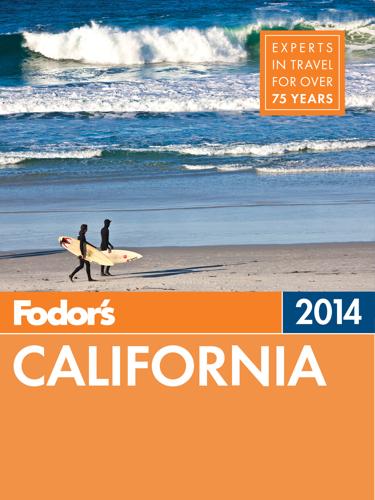
Fodor's California 2014
by
Fodor's
Published 5 Nov 2013
–mid-Mar., daily 10–4. The Haight, the Castro, and Noe Valley These distinct neighborhoods are where the city’s soul resides. They wear their personalities large and proud, and all are perfect for just strolling around. Like a slide show of San Franciscan history, you can move from the Haight’s residue of 1960s counterculture to the Castro’s connection to 1970s and ’80s gay life to 1990s gentrification in Noe Valley. Although historic events thrust the Haight and the Castro onto the international stage, both are anything but stagnant—they’re still dynamic areas well worth exploring. Previous Map | Next Map | California Maps Exploring the Haight Haight-Ashbury Intersection.
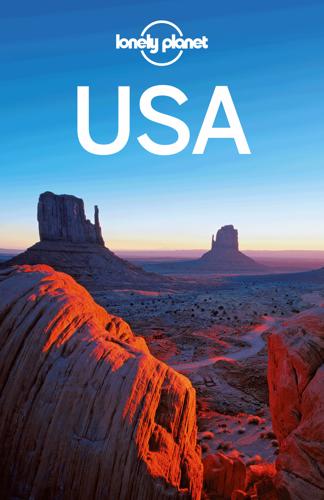
USA Travel Guide
by
Lonely, Planet
Just look for the green-and-white square sticker with a plate and silverware drawn in it – it’s an easy way of knowing that the eatery probably got its eggs from a neighboring farm. For a full listing of restaurants with this label, visit www.vermontfresh.net. BRATTLEBORO Ever wonder where the 1960s counter-culture went? It’s alive and well in this riverside burg overflowing with craft shops and more tie-dye per capita than any other place in New England. Sights & Activities Begin at Main St, which is lined with period buildings, including the handsome art-deco Latchis Building, which houses a hotel and theater.